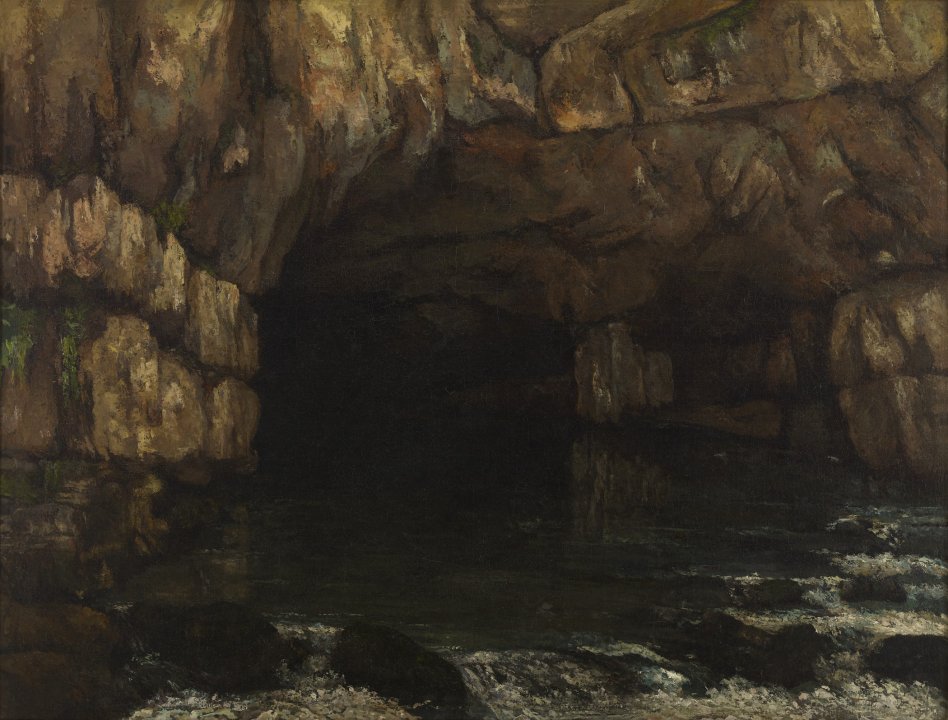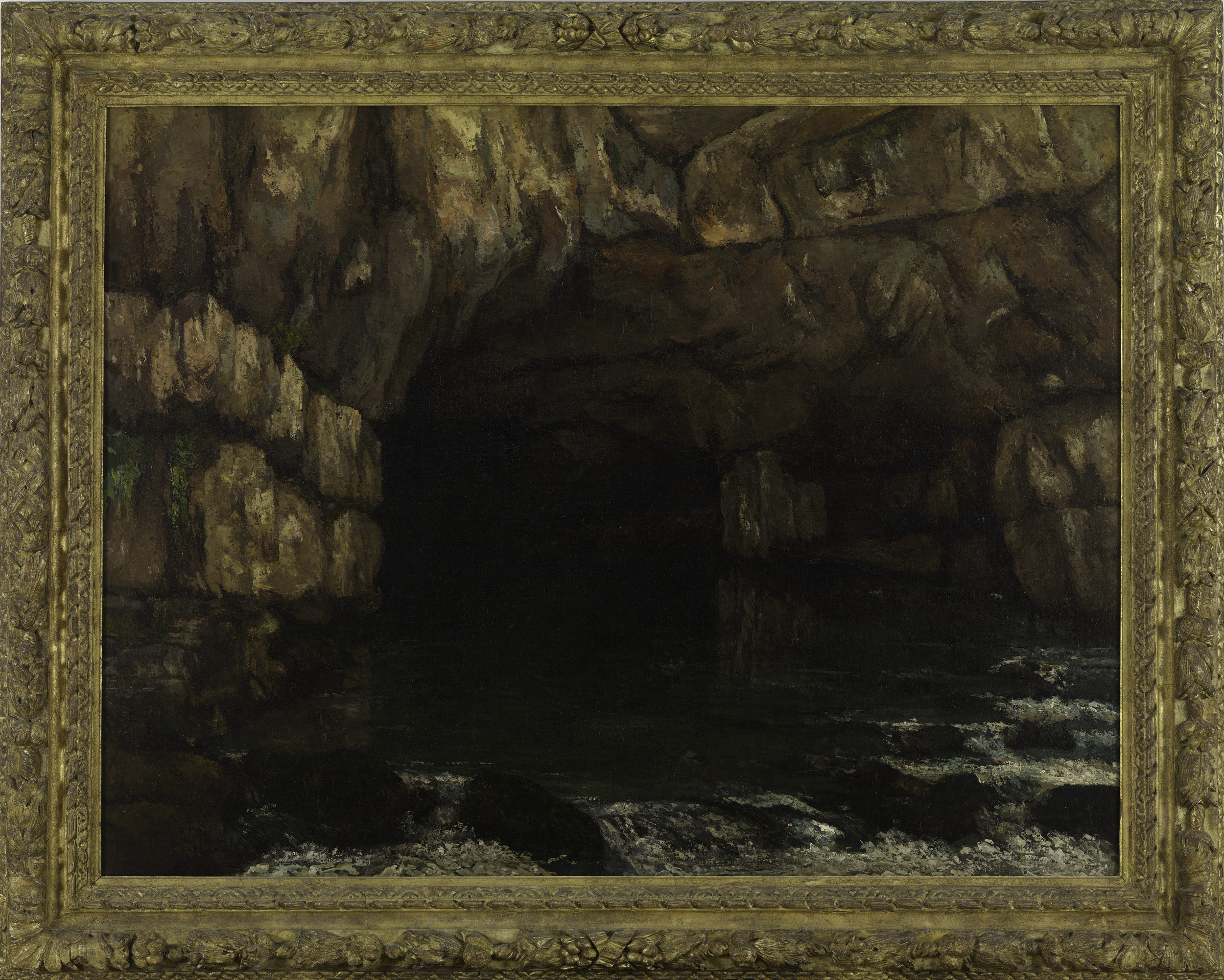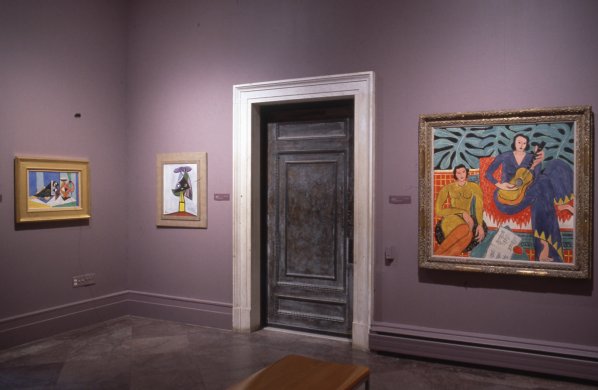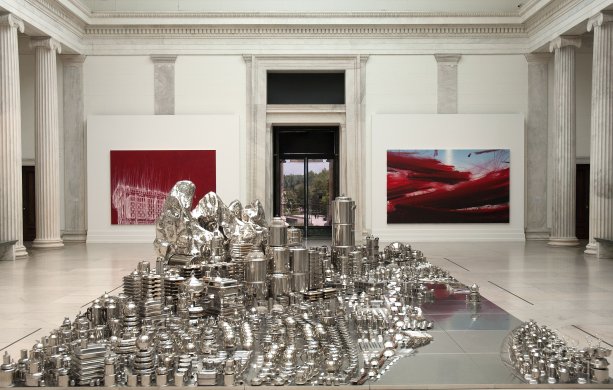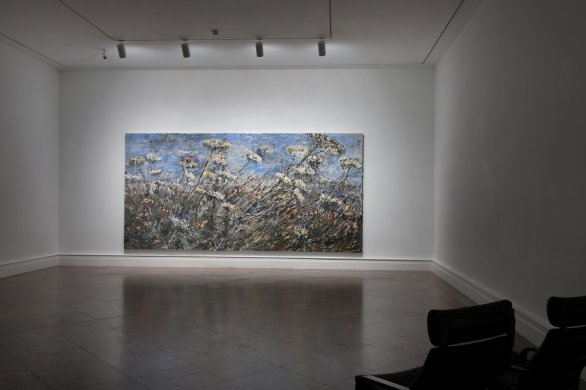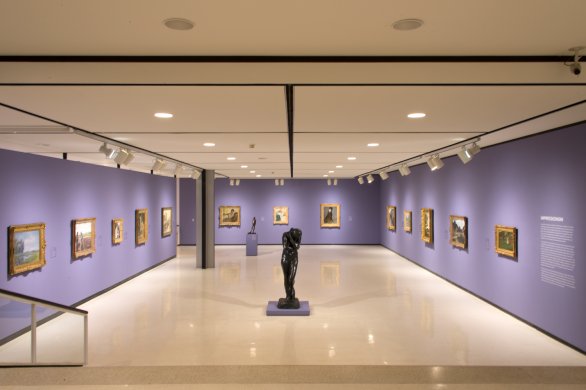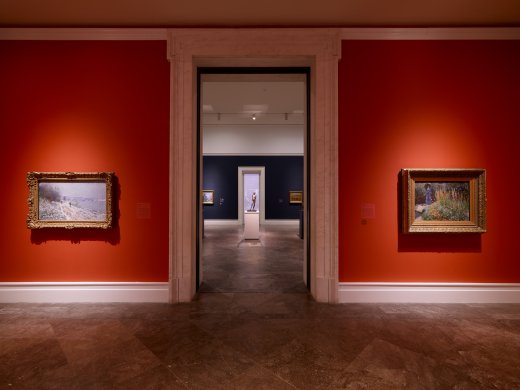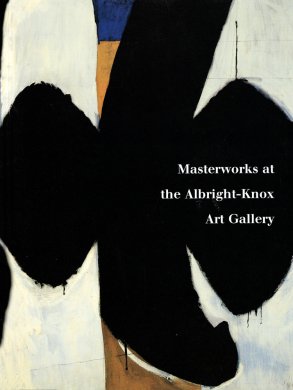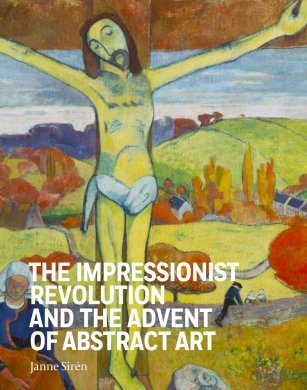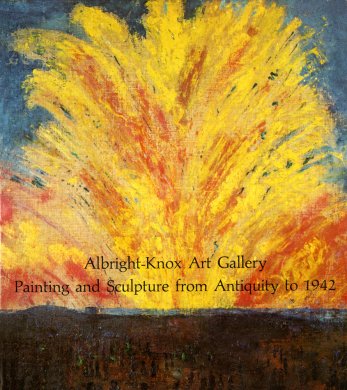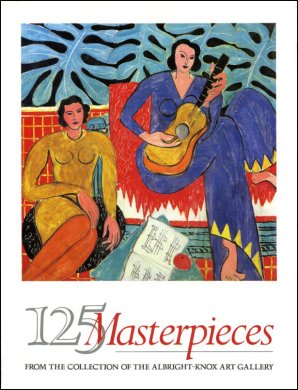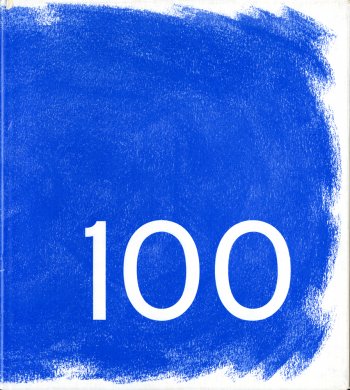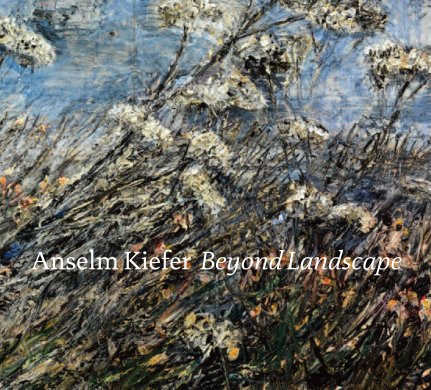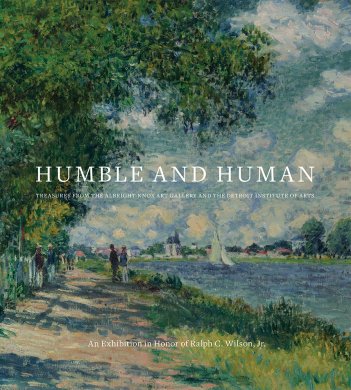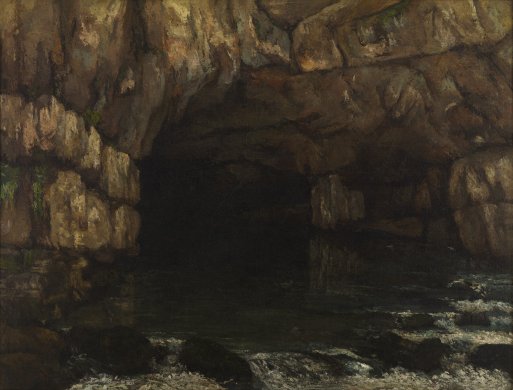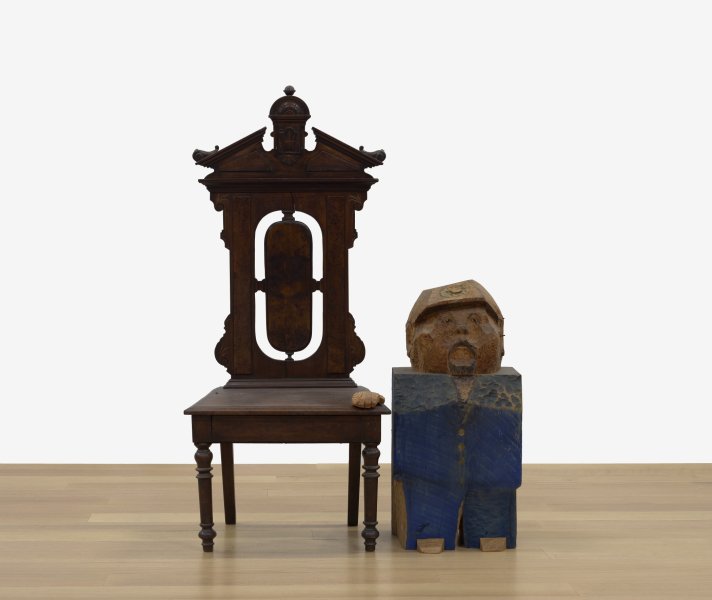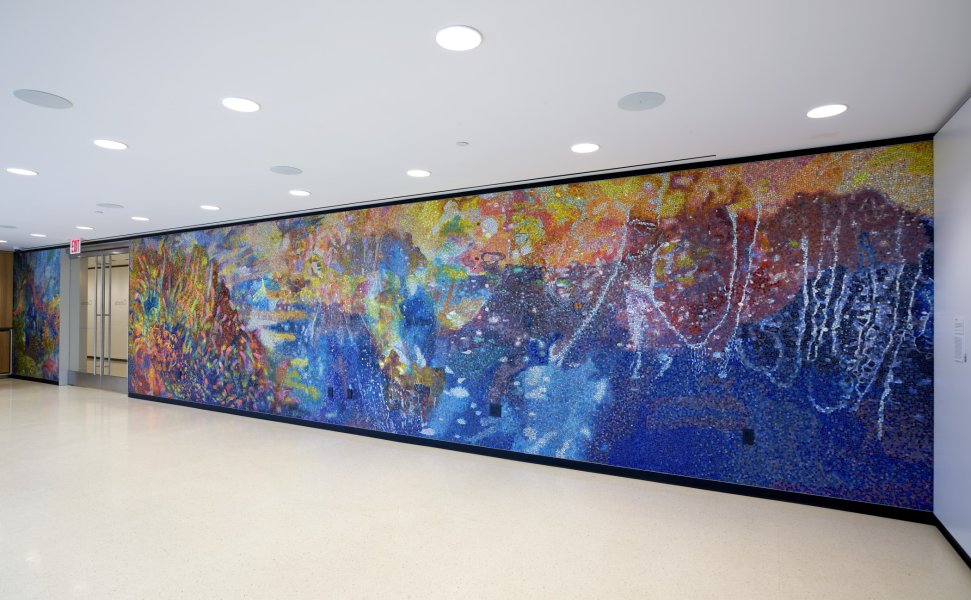Gustave Courbet
French, 1819-1877
La Source de la Loue (The Source of the Loue), ca. 1864
Artwork Details
Currently on View
Collection Highlight
Materials
oil on canvas
Measurements
support: 42 1/4 x 54 1/8 inches (107.315 x 137.4775 cm); framed: 50 5/16 x 62 7/8 x 4 1/2 inches (127.79 x 159.7 x 11.43 cm)
Collection Buffalo AKG Art Museum
Credit
George B. and Jenny R. Mathews Fund, 1959
Accession ID
1959:1
Although Gustave Courbet resided in Paris for most of his life, he remained closely connected to his birthplace, a region near the Swiss border called the Franche-Comté, returning often to paint the landscape and its people. One of the area’s natural wonders is the source of the Loue River, a scene Courbet painted numerous times beginning in 1848. The river is initially subterranean before emerging from the large grotto depicted here. Courbet mimicked the textures of rock and flowing water by thickly applying paint to the canvas with a palette knife. Somber browns and dark greens are punctuated by touches of red, pink, and blue, further conveying the cool dampness of place. Courbet aimed to make made bold social statements through his work, often courting scandal with his depictions of grave working-class conditions, and this seemingly straightforward rendering of a landscape is no exception. Although The Source of the Loue appears neutral, the foreboding darkness at the painting’s heart symbolizes the artist’s vehement opposition to the industrial endeavors that Napoleon III’s Second Empire brought to the French countryside so near and dear to his heart.
Label from Humble and Human: An Exhibition in Honor of Ralph C. Wilson, Jr., February 2–May 26, 2019
